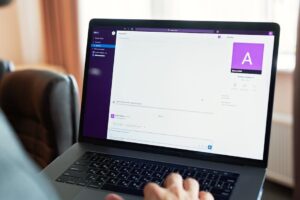Cross-Platform Development: Challenges and Best Practices
In today’s fast-paced digital landscape, businesses and developers are increasingly turning to cross-platform development to build applications that run seamlessly across multiple devices and operating systems. While this approach offers significant advantages such as cost savings and wider reach, it also comes with its own set of challenges. In this comprehensive guide, we’ll explore the key obstacles developers face, share best practices to overcome them, and provide actionable tips to optimize your cross-platform projects.
What Is Cross-Platform Development?
Cross-platform development is the process of creating software applications that can operate on multiple operating systems, such as iOS, Android, Windows, and macOS, using a single codebase. Popular cross-platform frameworks include React Native, Flutter, Xamarin, and Ionic. This approach reduces development time and cost compared to building native apps for each platform individually.
Benefits of Cross-Platform Development
- Cost Efficiency: Build once and deploy on multiple platforms, significantly reducing development costs.
- Faster Time to Market: Single codebase speeds up the entire development cycle.
- Consistent User Experience: Ensures uniform branding and UX across all devices.
- Greater Reach: Access a broader audience by supporting multiple platforms.
- Simplified Maintenance: Easier to manage updates and bug fixes with one codebase.
Key Challenges in Cross-Platform Development
Though appealing, cross-platform development presents unique hurdles. Understanding these challenges is crucial to successful project planning.
1. Performance Limitations
Cross-platform apps often underperform compared to native apps because of abstraction layers and bridging mechanisms. These can cause slower animations, delayed responses, or inefficient resource handling.
2. UI/UX Inconsistencies
Each platform has its own design language and interaction patterns (e.g., Material Design for Android, Human Interface Guidelines for iOS). Adapting UI components across platforms while maintaining a native feel can be tricky.
3. Limited Access to Device Features
Cross-platform frameworks sometimes lag in supporting the latest device features such as ARKit, Face ID, or platform-specific sensors. Developers might find themselves waiting for framework updates or needing to write native bridge code.
4. Debugging Complexity
Debugging cross-platform apps can be more complex due to the combination of underlying native and cross-platform code. Identifying the root cause of errors across platforms can slow down development cycles.
5. Larger App Sizes
Because the app bundles cross-platform libraries and runtimes, app size tends to be larger than native apps, which may impact download times and user experience, particularly on mobile devices.
Best Practices for Successful Cross-Platform Development
Applying strategic best practices will help developers maximize the benefits while minimizing the challenges of cross-platform development.
1. Choose the Right Framework
Select the cross-platform framework that best fits your project requirements, team skills, and target platforms. For example:
- React Native: Great for apps needing close-to-native performance with a JavaScript developer ecosystem.
- Flutter: Excellent for high-performance apps with customizable UIs and rapid development.
- Xamarin: Ideal when leveraging C# and .NET ecosystem is a priority.
2. Prioritize Platform-Specific Adaptations
Although the codebase is shared, customize UI and UX to respect each platform’s guidelines. Minor platform-specific tweaks can improve user satisfaction and app acceptance.
3. Optimize Performance
- Minimize the use of heavy animations and complex logic in cross-platform layers.
- Offload performance-critical code to native modules where necessary.
- Use profiling tools regularly to catch bottlenecks early.
4. Leverage Modular Architecture
Maintain a modular code structure to isolate platform-specific components, which facilitates easier maintenance and reduces future development debts.
5. Test on Real Devices and Emulators
Cross-platform testing should be comprehensive. Combine emulator testing with multiple real devices covering different OS versions, hardware specs, and screen sizes to ensure consistent performance and UI behavior.
6. Keep Abreast of Framework Updates
Cross-platform toolkits evolve quickly, unlocking support for new features and improving stability. Regularly update dependencies and keep your knowledge current.
Practical Tips to Streamline Cross-Platform App Development
- Use CI/CD Pipelines: Automate builds, tests, and deployments to speed up iterations and reduce manual errors.
- Implement Feature Flags: Allow dynamic enabling or disabling of functionalities for flexible testing and rollout.
- Use Common APIs: Stick to API standards widely supported across platforms to reduce complexity.
- Focus on Accessibility: Ensure apps are usable by everyone by following accessibility best practices.
Cross-Platform Development Comparison Table
| Framework | Language | Performance | Community Support | Platform Adaptability |
|---|---|---|---|---|
| React Native | JavaScript | High | Large & Active | Good |
| Flutter | Dart | Very High | Growing Fast | Excellent |
| Xamarin | C# | High | Moderate | Good |
| Ionic | JavaScript/HTML/CSS | Moderate | Large | Good |
Real-World Case Study: Flutter at Scale
Company: XYZ Fitness App
Challenge: XYZ Fitness wanted to launch its app simultaneously on iOS and Android with an engaging UI and low latency performance.
Solution: Using Flutter, their developers created a single codebase featuring smooth animations and customized platform-specific navigation.
Outcome: The app launched on schedule, saw a 35% reduction in development time, and earned high user ratings for fluid performance across devices.
Conclusion
Cross-platform development offers a compelling way to maximize your app’s reach and reduce development overhead. Despite inherent challenges like performance optimization, UI consistency, and debugging complexity, adopting the right frameworks and applying best practices can lead to highly successful outcomes.
By prioritizing platform-specific adaptations, maintaining modularity, and leveraging thorough testing, you can build robust, scalable apps that delight users across all devices. Whether you’re a developer or a business owner, understanding and embracing the challenges of cross-platform development will empower you to deliver exceptional multi-platform experiences.











